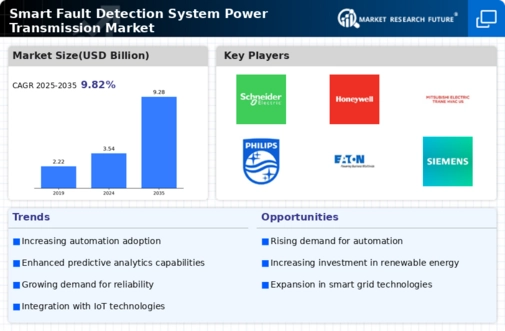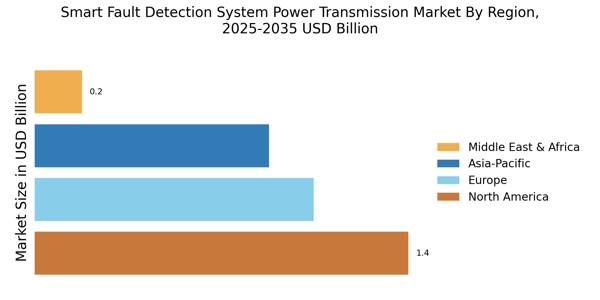Regulatory Compliance and Standards
Regulatory compliance and adherence to industry standards are crucial drivers for the Smart Fault Detection System Power Transmission Market. Governments and regulatory bodies are implementing stringent regulations to ensure the reliability and safety of power transmission systems. For instance, the implementation of the North American Electric Reliability Corporation (NERC) standards mandates utilities to adopt advanced monitoring systems. This regulatory landscape compels utilities to invest in smart fault detection systems, which not only meet compliance requirements but also enhance operational performance. The increasing focus on regulatory frameworks is expected to propel the market, as utilities seek to avoid penalties and ensure uninterrupted service delivery.
Integration of IoT and AI Technologies
The integration of Internet of Things (IoT) and Artificial Intelligence (AI) technologies is a pivotal driver for the Smart Fault Detection System Power Transmission Market. These technologies facilitate real-time monitoring and predictive analytics, enabling utilities to identify potential faults before they escalate into significant issues. The market for IoT in power transmission is projected to reach USD 20 billion by 2026, indicating a robust growth trajectory. AI algorithms enhance the accuracy of fault detection, reducing downtime and maintenance costs. As utilities increasingly adopt these advanced technologies, the demand for smart fault detection systems is likely to surge, thereby transforming operational efficiencies and reliability in power transmission.
Rising Focus on Operational Efficiency
Rising focus on operational efficiency is driving the Smart Fault Detection System Power Transmission Market. Utilities are increasingly seeking ways to optimize their operations, reduce costs, and enhance service reliability. Smart fault detection systems enable utilities to achieve these objectives by providing real-time insights into system performance and potential faults. By minimizing unplanned outages and maintenance costs, these systems contribute to improved operational efficiency. According to industry reports, utilities that implement smart fault detection technologies can reduce operational costs by up to 20%. This emphasis on efficiency is likely to propel the market forward as utilities strive to enhance their competitive edge in an evolving energy landscape.
Growing Demand for Renewable Energy Sources
The growing demand for renewable energy sources is significantly influencing the Smart Fault Detection System Power Transmission Market. As the energy landscape shifts towards sustainability, the integration of renewable energy sources such as wind and solar into existing power grids presents unique challenges. Smart fault detection systems are essential for managing the variability and intermittency associated with these energy sources. The International Energy Agency (IEA) projects that renewable energy will account for 30% of global electricity generation by 2025. This transition necessitates advanced fault detection capabilities to maintain grid stability and reliability, thereby driving the adoption of smart systems in power transmission.
Increased Investment in Smart Grid Infrastructure
Increased investment in smart grid infrastructure is a significant driver for the Smart Fault Detection System Power Transmission Market. Governments and private entities are allocating substantial funds to modernize aging power infrastructure, with smart grids being a focal point of these investments. The Smart Fault Detection System Power Transmission Market is expected to reach USD 100 billion by 2025, reflecting a growing recognition of the need for enhanced grid resilience and efficiency. Smart fault detection systems play a critical role in this modernization effort, providing utilities with the tools necessary to monitor and manage grid performance effectively. This trend is likely to accelerate the adoption of smart fault detection technologies across various regions.


















Leave a Comment